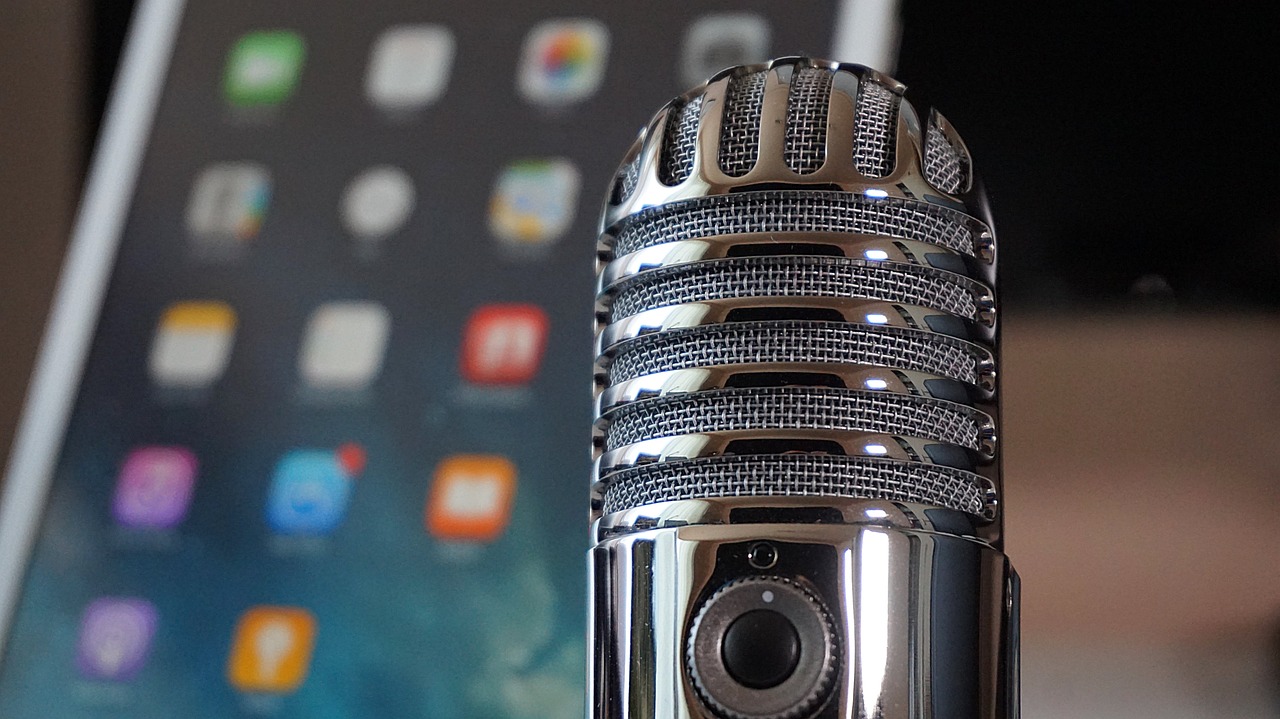If you’re serious about podcasting, then mastering the use of podcast analytics is a must. Not only does it allow you to track and measure the success of your episodes, but it also provides valuable insights into your audience and their preferences. By analyzing the data, you can make informed decisions on content creation, marketing strategies, and improving listener engagement. In this article, we’ll explore the top three reasons why mastering podcast analytics is essential for any podcaster looking to take their show to the next level. So, let’s dive in and discover how harnessing the power of podcast analytics can amplify your podcasting success.

Understanding Podcast Analytics
What is podcast analytics?
Podcast analytics refers to the collection and analysis of data related to podcast episodes and their audience. It involves tracking various metrics and statistics to gain insights into listener behavior, episode performance, and overall podcast success. These analytics provide podcasters with valuable information that can help them understand their audience, improve their content, and attract advertisers.
Importance of podcast analytics
Podcast analytics play a crucial role in the success and growth of a podcast. By understanding audience behavior and preferences, podcasters can make informed decisions about their content and increase engagement with their listeners. Additionally, having access to analytics data allows podcasters to measure their podcast’s value and demonstrate its worth to potential advertisers. Overall, podcast analytics are essential for podcasters who want to maximize the impact and profitability of their podcasts.
Common podcast analytics terms and their meanings
To effectively utilize podcast analytics, it is important to familiarize yourself with some common terms and their meanings:
- Downloads: The number of times an episode has been downloaded by listeners.
- Subscriptions: The number of subscribers who have opted to receive automatic updates of new episodes.
- Plays: The number of times an episode has been played by listeners.
- Unique listeners: The number of distinct individuals who have listened to at least one episode of your podcast.
- Engagement rate: The percentage of listeners who have engaged with your podcast by leaving comments, rating episodes, or sharing them on social media.
- Completion rate: The percentage of listeners who have listened to an entire episode.
- Listener retention: The ability to retain listeners and keep them engaged over a period of time.
- Conversion rate: The percentage of listeners who have taken a desired action, such as visiting a website or making a purchase, after listening to an episode.
Understanding these terms and how they relate to your podcast analytics will greatly enhance your ability to interpret and utilize the data effectively.
Benefits of Mastering Podcast Analytics
Increased understanding of audience behavior
One of the key benefits of mastering podcast analytics is gaining a deeper understanding of your audience’s behavior. By analyzing metrics such as downloads, plays, and engagement rates, you can identify patterns and trends in listener behavior. This insight allows you to tailor your content to better resonate with your audience, resulting in increased engagement and loyalty.
Improved content creation
Podcast analytics can provide invaluable feedback on the performance of your episodes. By analyzing metrics like completion rates and listener retention, you can identify which topics or segments resonate most with your audience. This knowledge enables you to create more targeted and compelling content, keeping your listeners engaged and eager for more.
Better advertiser relationships
Advertisers are increasingly interested in partnering with podcasts that have a solid understanding of their audience and can provide accurate and relevant listener data. By mastering podcast analytics, you can effectively showcase your podcast’s value to potential advertisers. Metrics such as unique listeners, conversion rates, and listener demographics can help attract advertisers who are looking to reach your specific target audience.

Reason 1: To Gain Insight into Your Audience
Understanding audience demographics
Podcast analytics can provide valuable information about the demographics of your audience. By analyzing data such as geographic location, age, gender, and interests, you can gain a deeper understanding of who your listeners are. This information can be used to fine-tune your content and tailor it to better meet the needs and interests of your target audience.
Identifying listening patterns
Analyzing podcast analytics can reveal important insights into your audience’s listening patterns. You can identify the days and times when your episodes receive the highest number of downloads or plays, allowing you to optimize your release schedule for maximum impact. Additionally, you may discover trends in the devices or platforms your audience uses to consume your podcast, which can help you tailor your distribution strategy accordingly.
Analyzing engagement metrics
Podcast analytics provide valuable engagement metrics that allow you to gauge the level of interaction and interest from your audience. Measuring metrics such as comments, ratings, social media shares, and completion rates can help you understand how engaged your listeners are. This information can guide your content creation decisions and help you foster a highly engaged and dedicated audience.
Reason 2: To Improve Your Content Creation
Feedback on episode performance
Podcast analytics provide valuable feedback on the performance of your episodes. By examining metrics such as completion rates, you can determine which segments or topics resonate most with your audience. This information allows you to focus on producing content that is most engaging and relevant to your listeners, enhancing their overall listening experience.
Identifying popular topics
Analyzing podcast analytics can help you identify the topics that generate the most interest and engagement from your audience. By examining metrics such as download numbers, plays, and engagement rates for each episode, you can pinpoint the topics that resonate most with your listeners. This knowledge allows you to create more content on popular topics, keeping your audience satisfied and engaged.
Improving podcast timing and frequency
Podcast analytics can provide insights into the optimal timing and frequency for releasing your episodes. By analyzing data on download and play numbers, you can identify the days and times when your audience is most likely to engage with your content. This information allows you to schedule your episodes strategically, maximizing their reach and impact.

Reason 3: To Attract and Retain Advertisers
Providing relevant listener data to advertisers
Advertisers are increasingly interested in partnering with podcasts that can provide accurate and relevant listener data. Podcast analytics allow you to gather and present key metrics to potential advertisers, such as unique listeners, listener demographics, and engagement rates. This information demonstrates the value of your podcast and its potential to reach and engage a specific target audience.
Proving podcast value through analytics
Podcast analytics provide concrete data on the performance and impact of your podcast. By showcasing metrics such as conversion rates and listener retention, you can demonstrate the tangible value your podcast brings to advertisers. This data helps build trust and confidence in your podcast’s ability to deliver results, making it more appealing to potential advertisers.
Monitoring advertisement performance
Podcast analytics enable you to track the performance of advertisements within your episodes. By analyzing metrics such as click-through rates and conversion rates, you can gauge the effectiveness of the advertisements and make data-driven decisions on optimizing their placement and content. This level of insight helps you maintain strong relationships with advertisers by ensuring their messages are reaching your audience in the most effective way possible.
Tools Used for Podcast Analytics
Introduction to podcast analytics tools
There are several tools available to assist podcasters in gathering and analyzing analytics data. These tools vary in features and capabilities, allowing podcasters to choose the one that best suits their specific needs.
Some popular podcast analytics tools include:
- Chartable: Provides comprehensive podcast analytics, including audience demographic data, episode performance metrics, and listener behavior analysis.
- Podtrac: Offers in-depth podcast analytics, including audience measurement, industry benchmarking, and advertisement performance tracking.
- Libsyn: Provides podcast hosting and distribution services, as well as analytics tools to track and analyze audience engagement and download statistics.
- Blubrry: Offers podcast hosting, distribution, and analytics services, allowing podcasters to track and analyze audience behavior and engagement.
These tools can be instrumental in helping podcasters gather and interpret analytics data, allowing them to make informed decisions and maximize the impact of their podcasts.
Comparing different podcast analytics tools
When choosing a podcast analytics tool, it’s important to consider various factors such as ease of use, available features, and pricing.
For example, Chartable offers a user-friendly interface and provides valuable insights into audience demographics, location data, episode performance, and more. Podtrac, on the other hand, focuses on in-depth audience measurement and benchmarking, allowing podcasters to understand their performance in relation to industry standards.
Libsyn and Blubrry offer a combination of hosting, distribution, and analytics services, making them convenient options for podcasters who want an all-in-one solution. Additionally, these platforms provide customizable analytics reports, allowing podcasters to focus on the metrics that are most relevant to their podcasts’ success.
Ultimately, the best podcast analytics tool for you will depend on your specific needs and preferences. It’s essential to assess the features and capabilities of each tool to ensure it aligns with your goals and objectives.
Software for Podcast Production and Analytics
Adobe Audition Podcasting Software
Adobe Audition is a professional audio editing and production software widely used by podcasters. It offers a range of features and tools specifically designed for podcast creation, editing, and optimization. Additionally, Adobe Audition provides comprehensive audio analytics, allowing podcasters to analyze the quality and performance of their audio files.
Audacity Audio Editor and Recorder
Audacity is a free, open-source audio editor and recorder that is popular among podcasters. It offers a user-friendly interface and a wide range of editing and recording capabilities. While it doesn’t have built-in analytics features, Audacity can be used in combination with other analytics tools to gather and analyze podcast data.
Auphonic
Auphonic is an automated audio post-production tool that simplifies the process of editing and optimizing podcast episodes. It offers integrated analytics functionality, allowing podcasters to track and analyze episode performance, listener engagement, and other key metrics. Auphonic also provides detailed reports and visualizations to help podcasters understand and interpret their analytics data.
Podcasting Equipment Analysis and Data Collection
Shure
Shure is a renowned brand in the audio industry, known for producing high-quality microphones for podcasting. Their microphones offer excellent sound quality and durability, making them a popular choice among podcasters.
Rode
Rode is another well-respected brand that offers a wide range of microphones suitable for podcasting. Their microphones are known for their versatility, affordability, and exceptional audio quality.
Audio-Technica
Audio-Technica is a reliable brand that produces a variety of microphones suitable for podcasting. Their microphones are known for their durability, clarity, and affordability.
Zoom
Zoom produces portable audio recorders that are highly regarded by podcasters. Their recorders offer exceptional sound quality, ease of use, and portability, making them ideal for recording podcasts on-the-go.
Behringer Xenyx X1204USB Premium 12-Input Mixer
The Behringer Xenyx X1204USB mixer is a versatile tool for podcasters who require more advanced audio mixing capabilities. It allows podcasters to control and adjust audio levels, apply effects, and connect multiple audio sources for a professional sound.
Focusrite
Focusrite produces audio interfaces that are widely used by podcasters. Their interfaces provide high-quality audio conversion and preamps, ensuring excellent sound quality for podcast recordings.
Blue Yeti Microphone
The Blue Yeti microphone is a popular choice among podcasters due to its ease of use, versatility, and exceptional sound quality. It offers various polar patterns and built-in gain control, making it suitable for a wide range of podcasting applications.
Cloud Microphones
Cloud Microphones offers a range of high-quality microphones designed specifically for studio recording and podcasting. Their microphones are known for their warm and detailed sound, making them a favorite among professional podcasters.
AKG K240 Studio Semi-Open Over-Ear Professional Studio Headphones
AKG K240 Studio headphones are highly regarded by podcasters and audio professionals for their accurate sound reproduction and comfortable fit. They provide a balanced and detailed sound, making them ideal for monitoring and editing podcast episodes.
Sony
Sony produces a variety of audio equipment suitable for podcasting, including microphones, headphones, and audio recorders. Their products are known for their reliability, quality, and affordability.
Beyond Standard Podcast Metrics
Understanding advanced podcast metrics
While standard podcast metrics provide valuable insights into listener behavior and episode performance, advanced podcast metrics provide a deeper level of analysis and understanding.
Some examples of advanced podcast metrics include:
- Listener segmentation: Dividing your audience into different segments based on factors such as demographics, interests, and listening behavior. This allows for more targeted and personalized content and advertising strategies.
- Conversion attribution: Tracking how listeners interact with your podcast and attributing specific actions, such as website visits or purchases, to individual episodes or advertisements.
- Listener sentiment analysis: Analyzing listener feedback and sentiment to understand their feelings and opinions about your podcast. This can help identify areas for improvement and optimize content to better meet listener expectations.
Importance of detailed analysis
Performing detailed analysis of podcast metrics allows podcasters to gain a more comprehensive understanding of their audience and episode performance. Advanced metrics can reveal valuable insights and trends that may not be apparent from standard metrics alone. This information can help guide content creation decisions, improve episode performance, and enhance the overall listening experience for the audience.
Methods to perform in-depth analysis
To perform in-depth analysis of podcast metrics, podcasters can utilize various methods and tools. These may include:
- Surveys: Conducting surveys to gather feedback from listeners and understand their preferences, interests, and satisfaction levels.
- A/B testing: Comparing different versions of episodes or advertisements to determine which performs better in terms of engagement, conversion rates, and listener sentiment.
- Focus groups: Gathering a small group of listeners to discuss their thoughts and opinions about your podcast, allowing for more detailed and qualitative feedback.
- Social media monitoring: Monitoring social media platforms for mentions, comments, and feedback regarding your podcast, providing valuable insights into audience reactions and sentiment.
By combining these methods with advanced podcast analytics tools, podcasters can gain a deeper understanding of their audience and optimize their content and strategies for maximum impact.
Moving Forward with Podcast Analytics Mastery
Best practices for podcast analytics
To effectively master the use of podcast analytics, it’s important to follow some best practices:
- Set clear goals: Define your objectives and the key metrics you want to track. This will provide focus and ensure you gather the most relevant data.
- Regularly review and analyze metrics: Consistently monitor and analyze your podcast analytics to identify trends, patterns, and opportunities to improve.
- Experiment and iterate: Continuously test and experiment with different content formats, topics, and strategies. Analyze the results and make data-driven decisions to optimize your podcast.
- Stay up to date with industry trends: Keep yourself informed about the latest trends, technologies, and best practices in podcast analytics. This knowledge will help you stay ahead of the curve and adapt to evolving listener behaviors and expectations.
Staying updated with latest analytics trends
Podcast analytics is a dynamic and evolving field, with new trends and technologies emerging regularly. To stay updated, podcasters can:
- Read industry publications and blogs: Subscribe to podcasts and blogs that focus on podcasting and analytics. These resources often share the latest trends, case studies, and expert insights.
- Participate in industry events: Attend webinars, conferences, and workshops focused on podcasting and analytics. These events provide opportunities to learn from industry experts and network with fellow podcasters.
- Join online communities: Engage with podcasting communities on social media platforms and forums. These communities are often a great source of information and a platform for discussions on industry trends and best practices.
- Follow analytics software and service providers: Follow the social media accounts and blogs of podcast analytics software and service providers. They often share updates and insights on new features, industry trends, and case studies.
By actively seeking out and staying updated with the latest analytics trends, podcasters can ensure they are making data-informed decisions and staying ahead in a competitive podcasting landscape.
Importance of consistent measurement and analysis
Consistency in measurement and analysis is crucial for podcasters who want to master the use of podcast analytics. By consistently tracking and monitoring key metrics, podcasters can gather reliable and accurate data that enables them to make informed decisions and optimizations. Regular analysis allows podcasters to identify trends, opportunities, and areas for improvement, resulting in a more successful and impactful podcast.
In conclusion, mastering the use of podcast analytics is essential for podcasters who want to understand their audience, improve their content, and attract advertisers. Podcast analytics provide valuable insights into audience behavior, episode performance, and advertisement effectiveness. By gaining a deep understanding of their audience, podcasters can create more engaging content, develop better advertising strategies, and ultimately grow their podcast’s success.
